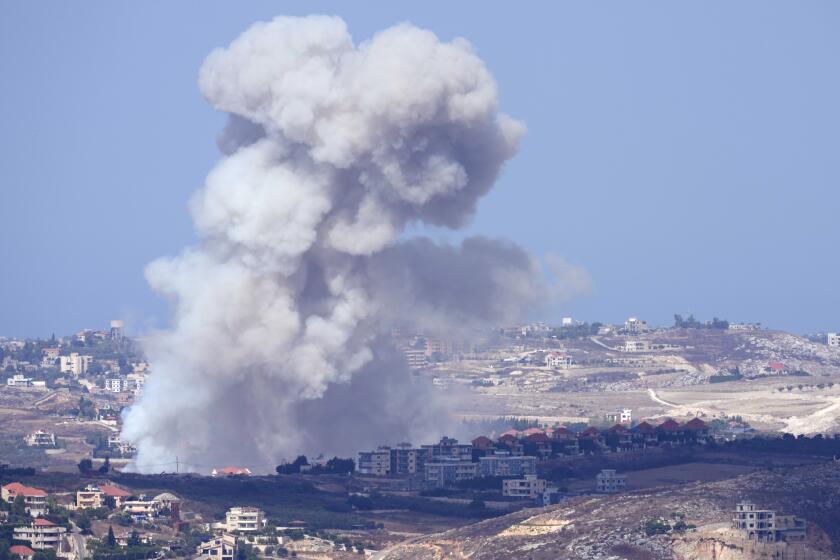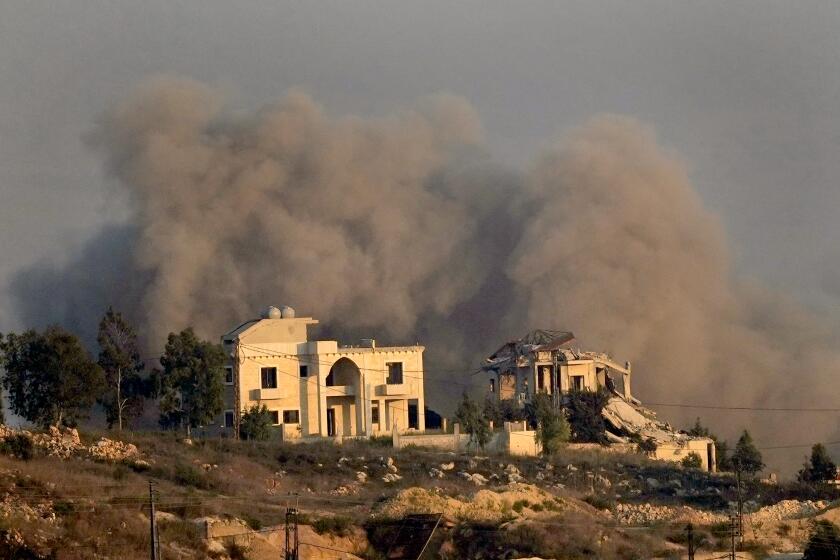Who was Hassan Nasrallah, the longtime Hezbollah leader killed by Israel?

BEIRUT — Hassan Nasrallah was for a long time one of the world’s most hunted men.
A founder of the Lebanese militant group Hezbollah and its longtime secretary general, Nasrallah had for decades played a cat-and-mouse game with Israel, living a life mostly in the shadows — while transforming a band of Shiite guerrillas into a powerful paramilitary faction.
Nasrallah, who was assassinated in an Israeli airstrike on Beirut on Friday, was admired or loathed throughout the Middle East and beyond. The Iranian-backed Hezbollah and Israel have long been committed to each other’s destruction.
Under his stewardship, the group evolved beyond its militia roots to become a powerful political party, able to decide the fate of Lebanon’s leaders and governments. Its social and educational branches provided better services than the Lebanese state, running schools, health clinics and youth programs for an often-neglected Shiite community. Its armed force, at least until the recent hostilities, was viewed as more capable than the Lebanese army, with an arsenal of rockets, missiles and drones. It has long been considered Israel’s top regional adversary.
Nasrallah also oversaw the export of Hezbollah’s military capabilities beyond Lebanon, turning the group into Iran’s most potent proxy among its regional network of militias and governments arrayed against the U.S. and Israel. Its fighters bolstered the flagging forces of Syrian President Bashar Assad in 2011, and trained other Iranian-backed militias in Iraq and Yemen.
Israel’s assassination of Hezbollah leader Hassan Nasrallah set off furious grief or grim satisfaction, redoubling fears of a widening regional war.
The U.S. State Department designated Hezbollah a terrorist organization in 1997. In 2012, the U.S. Treasury Department named Nasrallah and other top Hezbollah leaders to its “specially designated global terrorist” list.
Last year, Hezbollah began striking northern Israel almost immediately after the Gaza-based Palestinian militant group Hamas’ deadly cross-border attack in southern Israel on Oct. 7.
Hezbollah claimed it would stop the cross-border attacks if Israel agreed to a cease-fire in Gaza. But Israel refused to link the two conflicts, and Israeli Prime Minister Benjamin Netanyahu has refused to accept a cease-fire on both fronts, vowing just Friday at the United Nations to ratchet up the fight against Hezbollah.
“The world is a safer place” without Nasrallah, the Israeli military proclaimed.
Israel says the militant group’s headquarters is located under residential buildings in Beirut suburb, which were hit.
In official Washington on Saturday, no tears were being shed for Nasrallah, but there were widespread fears the conflict will spread. President Biden and other administration and congressional leaders said his death represented a “measure of justice” for Hezbollah’s victims through the years.
Russia condemned the killing, as did Iran. “The blood of the martyr shall not go unavenged,” Iranian Supreme leader Ayatollah Ali Khamenei said.
Born in 1960 into a large family in the mixed-religion Beirut neighborhood of Burj Hammoud, Nasrallah was 15 when he joined Amal, a Lebanese Shiite political movement and paramilitary organization fighting in Lebanon’s civil war.
The conflict between U.S.-backed Israel and Iran-backed Hezbollah could reach unprecedented levels of danger and destruction if it becomes all-out war.
He then traveled to a seminary in Najaf, Iraq, for religious studies, but two years later he and other Shiite students and clerics were expelled by Saddam Hussein’s government. He returned to Lebanon and taught in a school run by Abbas Musawi, a leader of Amal.
When Musawi broke away from Amal to form Hezbollah, Nasrallah followed him as a co-founder. Nasrallah took over the leadership after Musawi was killed in an Israeli airstrike in 1992; it was a role he would keep until his death.
Some of those who would eventually become Nasrallah’s top lieutenants — and many of whom were killed by Israel in recent months — were involved in the Islamic Jihad Organization, seen as the precursor to Hezbollah and linked to the 1983 suicide bombings in Beirut of the U.S. Embassy, in which 63 people were killed, and Marine barracks, which killed 241 American military personnel. (Nasrallah consistently denied those links.)
Under Nasrallah, Hezbollah’s guerrilla campaign forced Israel to end its occupation of south Lebanon in 2000;in 2006, a 34-day war with Israel ended with wide swaths of Lebanon destroyed but left the militant group intact. It cemented Hezbollah’s reputation as the only Arab force to have fought Israel successfully.
Hezbollah played on the popularity of Nasrallah, a skilled orator who spoke with a lisp and would crack the occasional joke and use slang. Even though for years he avoided public appearances, speaking to lieutenants through a secure landline network and to supporters via video link, the party faithful assembled in convention halls across Lebanon to hear his speeches. Posters on the streets showed him in various poses, and his likeness covered Hezbollah-branded mugs, buttons, T-shirts and ornate wooden boxes given as gifts.
As half a million in Lebanon are displaced by the raging Israel-Hezbollah conflict, people search for safety and sanity in crowded homes and shelters.
Despite his reputation for shrewd calculation, critics say Nasrallah — and Hezbollah with him — misread the situation with Israel. Though the group had calibrated its cross-border attacks for the last 11 months to fall short of full-on war, it assumed Israel would do the same.
Others say the group relied too much on the idea of deterrence established after the 2006 war, with Nasrallah vowing to strike Israeli cities whenever Israel hit Lebanese cities. But Hezbollah rarely followed through on those threats, said Michael Young, an analyst at the Carnegie Middle East Center, a think tank in Beirut.
Israel said it hit more than 1,110 Hezbollah targets in Lebanon. Lebanese officials said 492 people were killed.
“What the Israelis realized quickly was that, even as Israel was beginning to transgress the red lines, Hezbollah was sticking very studiously to the rules of engagement,” he said.
When Israel kept crossing the supposed red lines with little of the long-feared ballistic barrage from Hezbollah, the Israelis saw past the notion of deterrence, Young said.
“The thinking was, why not call their bluff and escalate?”
With Nasrallah’s death, the group suffers a seismic blow, with little clarity as to who in the group’s leadership is left to take his place. Some point to Hashem Safieddine, who heads Hezbollah’s mostly political executive council and sits on the group’s Jihad Council.
Hezbollah, the Lebanese Shiite militant group backed by Iran, appears to have hit the lowest point in its more than 40-year history.
Safieddine, like his cousin Nasrallah, wears the black turban declaring him a descendant of the prophet Muhammad. But it is unclear whether Safieddine survived the recent Israeli strikes, and some analysts point to his lack of experience as a military leader.
Nevertheless, some analysts believe the group can continue to operate without Nasrallah.
“Israel used new military capabilities, technology and warfare in a new way, presenting great challenges for the party,” said Kassem Kassir, an analyst close to Hezbollah. But, he added, “despite the size of the strikes, Hezbollah is a cohesive and strong organization and will grow stronger.”
Tracy Wilkinson in Washington contributed to this report.
More to Read
Sign up for Essential California
The most important California stories and recommendations in your inbox every morning.
You may occasionally receive promotional content from the Los Angeles Times.

















